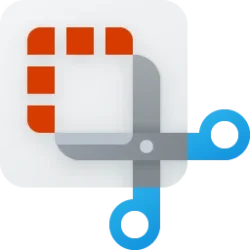Navigation
Install the app
How to install the app on iOS
Follow along with the video below to see how to install our site as a web app on your home screen.
Note: This feature may not be available in some browsers.
More options
Style variation
-
Disable Automatic Windows Updates in Windows 11
This tutorial will show you how to disable Windows Update from automatically downloading and installing updates in Windows 10 and Windows 11.- Brink
- Replies: 17
-
Use ViVeTool to Enable or Disable Hidden Features in Windows 11
This tutorial will show you how to use ViVeTool to enable or disable hidden features in Windows 10 and Windows 11.- Brink
- Replies: 49
-
Restore Classic File Explorer with Ribbon in Windows 11
This tutorial will show you how to restore the classic File Explorer with Ribbon for your account or all users in Windows 11.- Brink
- Replies: 422
-
Create Windows 11 Bootable USB Installation Media
This tutorial will show you how to create a bootable USB flash drive used to install Windows 11 with UEFI support.- Brink
- Replies: 135
-
Uninstall or Reinstall Copilot app
This tutorial will show you different ways to uninstall or reinstall the Copilot app for your account or all users in Windows 10 and Windows 11.- Brink
- Replies: 0
-
Add or Remove "Learn about this picture" Desktop icon
This tutorial will show you how to add or remove the "Learn about this picture" desktop icon when using Windows Spotlight as your desktop background for your account in Windows 11 and Windows 10.- Brink
- Replies: 27
-
Use SFC to Repair System Files in Windows 11
This tutorial will show you how to run the System File Checker (SFC) tool to repair missing, corrupted, and modified system files in Windows 10 and Windows 11.- Brink
- Replies: 25
-
Download Official Windows 11 ISO file from Microsoft
This tutorial will show you how to download an official Windows Server ISO or Windows 11 64-bit or ARM64 ISO file from Microsoft.- Brink
- Replies: 428
-
Repair Install Windows 11 with an In-place Upgrade
This tutorial will show you how to do a repair install of Windows 11 by performing an in-place upgrade without losing anything.- Brink
- Replies: 339
-
Clean Install Windows 11
This tutorial will show you step by step on how to clean install Windows 11 at boot on your PC with or without an Internet connection and setup with a local account or Microsoft account.- Brink
- Replies: 243
You are using an out of date browser. It may not display this or other websites correctly.
You should upgrade or use an alternative browser.
You should upgrade or use an alternative browser.
Tutorials
Windows 11 tutorials, tricks, tips, and guides.
Filters
Show only:
Loading…
This tutorial will show you how to add or remove the All apps button and page from the Start menu for all or specific users in Windows 11.
The Start menu is comprised of three sections: Pinned, All apps, and Recommended.
All apps appears when a user clicks on All apps in the upper-right corner of the Start menu. All Apps is a comprehensive list of shortcuts, in alphabetical order, of all installed apps. Some of these shortcuts are grouped into folders with the expandable folder in the list.
Removing the All Apps list can be handy if you prefer to only see pinned apps on Start instead.
Starting with Windows 11 build 22631.4391, “All apps” is now just “All” on the Start menu. This change began rolling out with Build 22635.4291.
You...
This tutorial will show you different ways to change the default sound input device for your account in Windows 11.
The default sound input device is the device that Windows uses for speaking or recording.
When you connect more than one microphone or other recording devices to your PC, you can select which device you want to use by default.
Option One: Change Default Sound Input Device in Settings
Option Two: Change Default Sound Input Device in Sound Control Panel
Option Three: Change Default Sound Input Device in Game Bar
Option Four: Change Default Sound Input Device for App in Settings
Change Default Sound Input Device in Settings
1 Open Settings (Win+I).
2 Click/tap on System on the left side, and click/tap on Sound on...
This tutorial will show you different ways to change the default audio playback (output) device for your account in Windows 11.
The default audio playback device is the device that Windows uses to output (play) sound.
When you connect multiple audio output devices such as speakers, headphones, Bluetooth headset, or other audio devices to your PC, you can select which device you want to use by default.
Option One: Change Default Sound Output Device in Quick Settings
Option Two: Change Default Sound Output Device in Settings
Option Three: Change Default Sound Output Device in Sound Control Panel
Option Four: Change Default Sound Output Device in Game Bar
Option Five: Change Default Sound Output Device for App in Settings
Change...
This tutorial will show you how to setup and show up to two additional clocks for different time zones on the taskbar for your account in Windows 11.
Windows can display up to three clocks on the taskbar: one for the local time and two additional clocks for different time zones. After you set up additional clocks, you can view them by clicking on or hover the pointer over the taskbar clock.
Starting with Windows 11 build 26040 (Canary), when you hover over the date and time in the system tray, the tooltip will now always show a clock even when you only have a single clock added.
Each addition clock is saved to the registry keys below:
Clock 1 = HKEY_CURRENT_USER\Control Panel\TimeDate\AdditionalClocks\1
Clock 2 =...
This tutorial will show you how to enable and disable a camera or webcam as needed in Windows 11.
In Windows, having a camera as part of your device lets you make Teams video calls, take pictures, record videos, and more.
Some people worry about unknown apps, organizations, or malware using their camera. Whenever your camera is used, you should be in charge. To help you understand when your camera is turned on, the following indicators are provided:
If your device comes with a camera light, the light will turn on when the camera is in use.
If your system doesn’t have a camera light, you’ll get a notification to let you know when the camera turns on or off.
Sometimes you may want to disable the camera for privacy and security reasons...
This tutorial will show you how to turn on or off animation effects for your account in Windows 11.
Windows 11 uses animation effects for controls and elements by default.
Reference:
https://docs.microsoft.com/en-us/windows/apps/design/signature-experiences/motion
Your animation effects settings are saved to the UserPreferencesMask DWORD value in the registry key below. This DWORD value also includes other visual effects settings.
HKEY_CURRENT_USER\Control Panel\Desktop
Option One: Turn On or Off Animation Effects in Settings
Option Two: Turn On or Off Animation Effects in Control Panel
Option Three: Turn On or Off Animation Effects in Performance Options
EXAMPLE: Animations in Windows 11 Motion Design
Turn On or Off...
This tutorial will show you how to check the current health, SMART status, temperature, and estimated remaining life of drives in Windows 11.
S.M.A.R.T. (Self-Monitoring, Analysis and Reporting Technology; often written as SMART) is a monitoring system included in computer hard disk drives (HDDs), solid-state drives (SSDs), and eMMC drives. Its primary function is to detect and report various indicators of drive reliability with the intent of anticipating imminent hardware failures.
Reference:
https://support.microsoft.com/en-us/topic/what-to-do-about-a-critical-warning-for-a-storage-device-258e0042-e091-277d-5fa6-3c710fba70d7
Option One: Check Health and SMART Status of NVMe SSD Drives in Settings
Option Two: Check Health and...
This tutorial will show you how to see what the startup impact is for your startup apps on your Windows 11 PC.
Startup apps are the apps that start automatically when you sign in to Windows 11.
You can have any app, shortcut, folder, drive, file, script, etc.. items automatically open or run at startup.
Windows 11 includes functionality to ensure you are always in control of the apps that run on your systems. Settings and Task Manager shows a list of startup apps, along with controls that allow users to disable startup apps. To help users determine what to disable, Settings and Task Manager displays a measure of each startup app’s impact. Impact is assessed based on an app’s CPU and disk usage at startup.
Reference...
This tutorial will show you how to calibrate a HDR display using the Windows HDR Calibration app for your account in Windows 11.
HDR content offers better brightness and color capabilities compared to traditional content (sometimes called standard dynamic range [SDR] content). Traditional content typically shows details in a bright part of a scene or a darker part of a scene but not in both parts at the same time. For example, if the shot focuses on a bright window in the scene, details in the shadow are lost.
You can use the Windows HDR Calibration app to calibrate your HDR (high dynamic range) display for a better experience with HDR content on your Windows 11 PC. The Windows HDR Calibration app helps you improve color accuracy and...
This tutorial will show you how to download and install the Media Feature Pack for N editions of Windows 11.
N editions of Windows include the same functionality as other editions of Windows, except for media-related technologies, Windows Media Player, and certain preinstalled media apps (Groove, Movies & TV, Voice Recorder, and Skype). The Media Feature Pack provides a way for you to restore these excluded technologies.
These technologies include, but are not limited to, the following features:
Windows Media Player application: Enables Windows Media Player features, such as the ability to play media files and audio CDs, manage media in a library, create a playlist, provide metadata (including album art) for media, create an audio...
This tutorial will show you how to enable or disable secure sign-in to require users to press Ctrl + Alt + Delete on the lock screen before signing in to Windows 11.
The lock screen (aka: welcome screen) is the screen you see at startup and when you lock (Win+L) the PC. You will need to dismiss the lock screen to to see the sign-in screen and sign in to Windows.
For added security, you can enable secure sign-in to require users to press Ctrl + Alt + Delete on the lock screen before signing in. This guarantees that the authentic Windows sign-in screen appears, protecting the system from programs that mimic a sign-in to retrieve password info.
Reference...
Latest Tutorials
-
Browsers and Mail Enable or Disable Extensions from Other Stores in Microsoft Edge on Windows 11
- Started by Brink
- Replies: 0
-
-
-
-
Browsers and Mail Enable or Disable Extension Developer Mode in Microsoft Edge on Windows 11
- Started by Brink
- Replies: 0
-
Browsers and Mail Pin or Unpin Extensions on Toolbar in Microsoft Edge on Windows 11
- Started by Brink
- Replies: 4
-
Browsers and Mail Enable or Disable Extensions in Microsoft Edge InPrivate Browsing on Windows 11
- Started by Brink
- Replies: 0
-
-
Browsers and Mail Enable or Disable Extensions in Microsoft Edge on Windows 11
- Started by Brink
- Replies: 0
-
Tutorial Tags
android
background
battery
bitlocker
bluetooth
boot
color
context menu
copilot
defender
desktop
display
drive
edge
file explorer
folder
hyper-v
icon
keyboard
location
mouse
notepad
notifications
onedrive
outlook
paint
pen
photos
pointer
power
printer
recall
screenshot
search
settings
share
shortcuts
sign-in
sound
start menu
store
taskbar
terminal
theme
touch
usb
voice
wi-fi
widgets
xbox




















